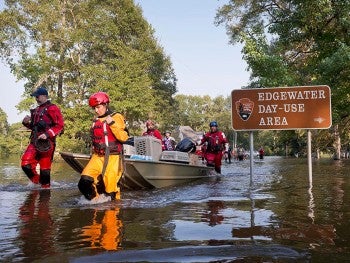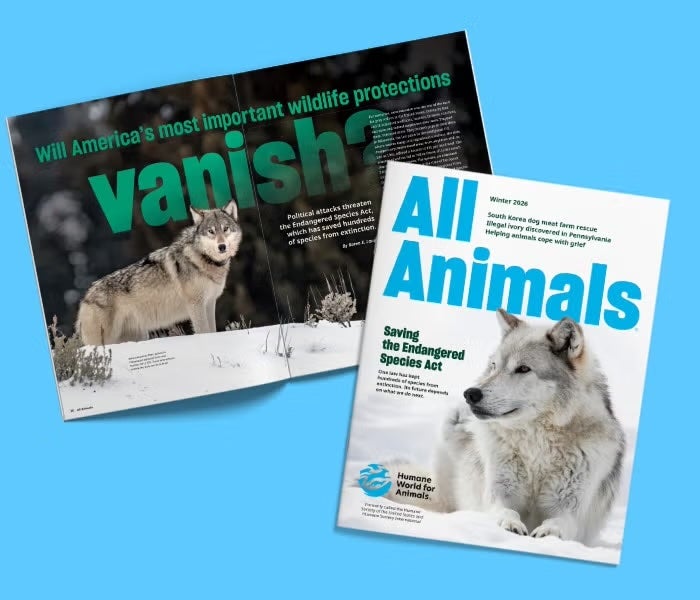Around the world, communities are facing more frequent, more severe and more volatile extreme weather events. Since 1970, climate and weather-related disasters have increased fivefold, according to the United Nations. In light of the growing threat of extreme weather, Humane World for Animals disaster responders are evolving their strategies. Teams deploy to areas hit by devastation, but we’re also putting more resources into helping communities prepare for disasters before they occur.
“These events are going to happen,” says Evan Quartermain, programs director at Humane World for Animals Australia. “But by working with the people on the ground…and by equipping them as best we can, we can really minimize the suffering that does occur.”
Why we need an evolving approach to disaster response
The need for disaster preparedness was on full display last year when disasters hit multiple countries within a span of a few months.
In less than a day, Hurricane Helene rapidly intensified from a Category 1 hurricane to a Category 4 as it moved across the record-hot Gulf Coast waters. That same day, Sept. 26, 2024, the hurricane made landfall in Florida. It then headed north to the Appalachian region, which had already been hit by days of heavy rainfall.
In its wake, Hurricane Helene left catastrophic damage. At least 250 people died, making it the second deadliest hurricane in the U.S. since Hurricane Katrina in 2005. Tens of thousands of homes were destroyed. Animal shelters flooded and were left without power.
Unicoi Animal Shelter in Tennessee was one animal shelter that Hurricane Helene destroyed. (Photo by Jessica Hyder/Humane World for Animals)
The Animal Rescue Team at Humane World quickly responded. Teams deployed to four communities in Florida and Tennessee to set up pop-up veterinary clinics and pet supply distribution centers. They also took in over 40 cats and dogs from local shelters to free up space for animals directly impacted by the disaster. The animals were then transported to our Maryland care and rehabilitation center.
Just two weeks before Hurricane Helene, intense rainfall hit Central Europe and caused floods in multiple countries. Humane World provided emergency grants to animal shelters in Poland and Romania, many of which had been damaged by the waters. Two months earlier, in July, rescuers with Humane World India responded to massive landslides triggered by heavy rainfall. More than 400 people and 1,400 animals were killed. Over the course of eight days, rescuers distributed food to stranded cattle and provided care and medical treatment to 186 animals.
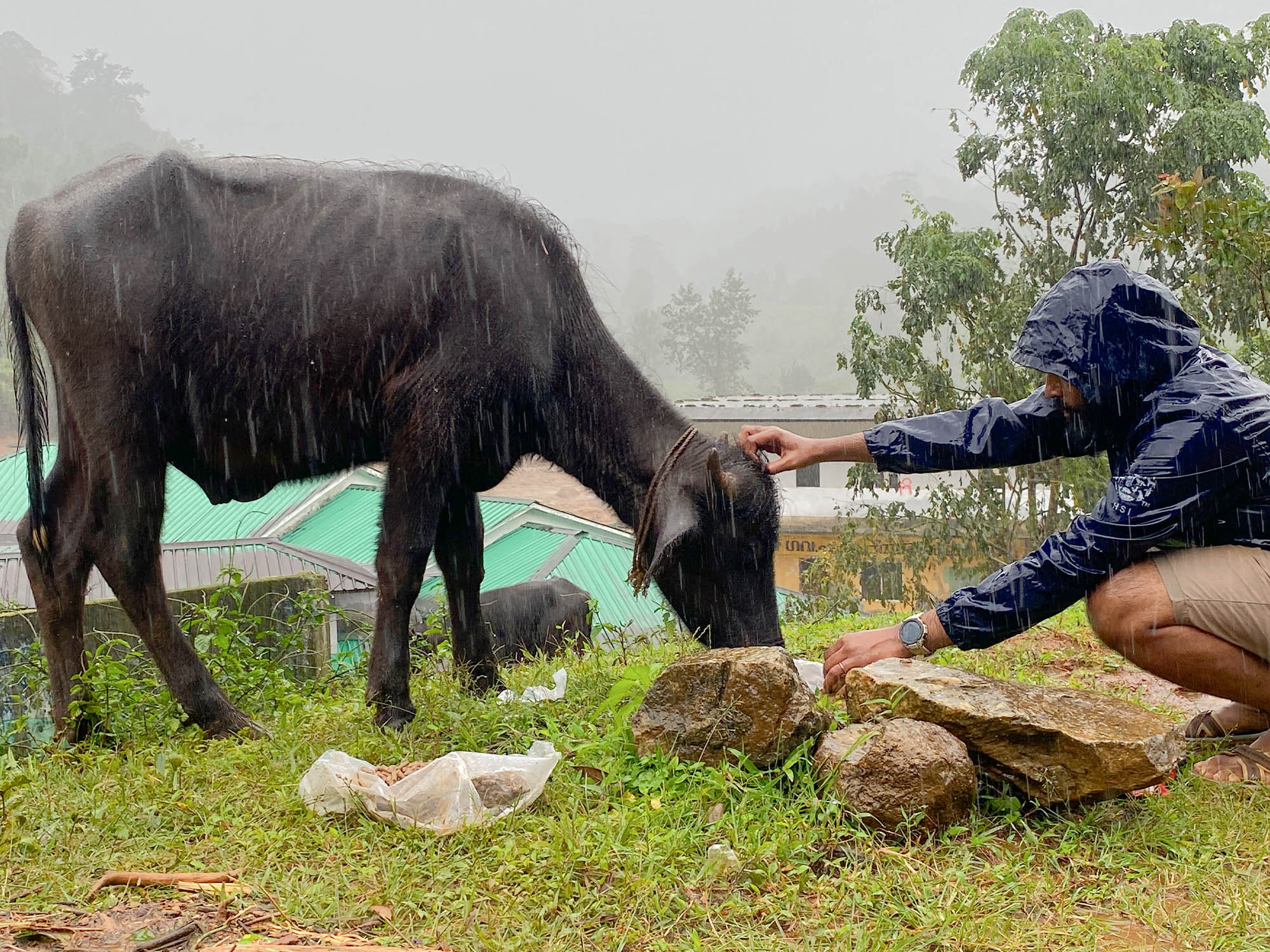
Our Animal Rescue Team cares for a cow affected by the Wayanad landslides. (Photo by Nayana Scaria/Humane World for Animals)
All of these weather events were exacerbated by climate change.
Extreme weather has a major impact on people and animals. More than half the world’s population is now at high risk of experiencing an extreme weather event, according to the World Bank. Many affected people have pets or farm animals. Some can bring their animals as they flee, but many are forced to leave them behind. Others delay seeking safety themselves because they have nowhere to take their animals. Wild animals may be killed in the devastation. For those who survive, vital resources such as food and shelter are often destroyed.
What we're doing to help communities prepare for climate disasters
Humane World India has been responding to disasters in the country since 2013. After seeing the increased scale and severity of extreme weather events, our team in India started incorporating disaster preparedness into their work in 2021.
To create the greatest impact, staff analyzed the disaster risks different regions face and cross-referenced that with the number of animals in these areas. The team identified five priority states to focus our efforts on.
Our team then started talking with community members about their needs. Person after person told Praveen Suresh, disaster response manager at Humane World India, they had nowhere to take their animals during a disaster.
Those conversations, along with further discussions with disaster management authorities, sparked the idea for the country’s first permanent emergency animal evacuation shelter. Humane World India is currently working with local authorities and government officials to build the shelter in the flood- and landslide-prone district of Wayanad.
Humane World for Animals India hosts a monsoon preparedness workshop in 2025 to raise awareness for helping animals and communities during disasters like floods and landslides.
Our team is also equipping community members with preparedness tools. Because women are often the primary animal caregivers, they are working with women-led self-help groups to help them safeguard themselves and their animals from disasters. This includes using community knowledge to identify safe zones for animals during disasters, bringing in a veterinarian to teach people first aid techniques for animals, and providing attendees with animal first aid kits.
Thousands of miles away, extreme weather is having a major impact on wildlife rescue efforts in Australia. Climate change “has really dramatically increased the capacity requirement for the entire animal care sector in quite a short amount of time,” Quartermain says.
Bushfires, floods and heat waves are increasing in frequency and intensity in the country. In 2019, record hot and dry conditions set the stage for one of the worst bushfires in the country’s history. From September 2019 to March 2020, bushfires raged on and killed over 1 billion animals.
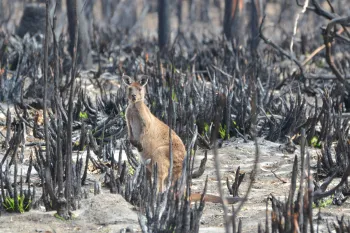
Evan Quartermain/Humane World for Animals
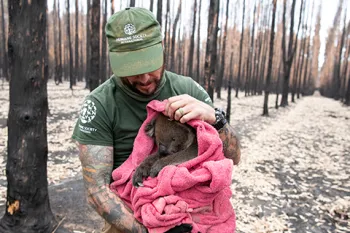
Meredith Lee/Humane World for Animals
Members of our rescue team flew to Australia and worked with Humane World Australia staffers to help burned koalas, kangaroos, wallabies and other animals.
In the years since, Humane World Australia has been focusing more on disaster resiliency and advocating for the government to invest more resources into disaster preparedness. We’ve provided over $1 million in grants to licensed wildlife carers to help them care for animals impacted by the bushfires and buy supplies for future disaster responses.
Preparing more people in more places
With so many disasters happening around the world, the rescue team simply doesn’t have the capacity to respond to every event, says Adam Parascandola, vice president of our rescue team. That’s part of the reason why helping communities prepare ahead of time is so important. And by helping communities create effective disaster preparedness plans, they create a model other communities can replicate.
After catastrophic flooding hit Kerr County, Texas last month and killed over 100 people, some of our staff helped on the ground while others coordinated the distribution of supplies from afar. By happenstance, we also had a disaster preparedness training already scheduled to occur in the state. Shortly after the floods, animal sheltering staff, including those directly affected by the July devastation, learned about caring for animals during disasters. This coincidental timing shows why trainings are so important, says Celia Jackson, program director of disaster response with the rescue team. As disasters become more common, she says training events may coincide with devastation “more and more frequently.”
Humane World for Animals/
Are you disaster-ready?
Natural disasters can strike without warning and are stressful and chaotic—but this free, expert-approved guide gives you the tools to plan ahead so your pets stay safe and by your side through any emergency.
Humane World disaster responders have also been expanding their reach into regions previously considered safe from extreme weather. “We’re seeing disasters in places like Europe where traditionally we haven't seen a lot of major disasters in the [recent] past,” says Parascandola.
When floods hit Central Europe last year, Parascandola says many were unprepared for the scale of devastation. “When you have an area like that where there haven’t been disasters, while there [may be] a lot of animal groups, there's not a lot of awareness or understanding of how disasters affect animals,” Parascandola says.
It’s a trend seen in countries across Europe. “Lessons from recent disasters in Germany, Belgium, Austria, Italy, Poland [and] Greece clearly indicated that animals are consistently neglected in emergency protocols, with few resources allocated to veterinary response, animal evacuation, or livestock sheltering,” says Iga Glazewska Bromant, Poland country director for Humane World for Animals Europe.
We’re currently exploring strategies to expand disaster resources for animals across Europe. As part of that work, we’ve provided funding to the organization Dogs’ Voice in Greece that cares for animals affected by disasters.
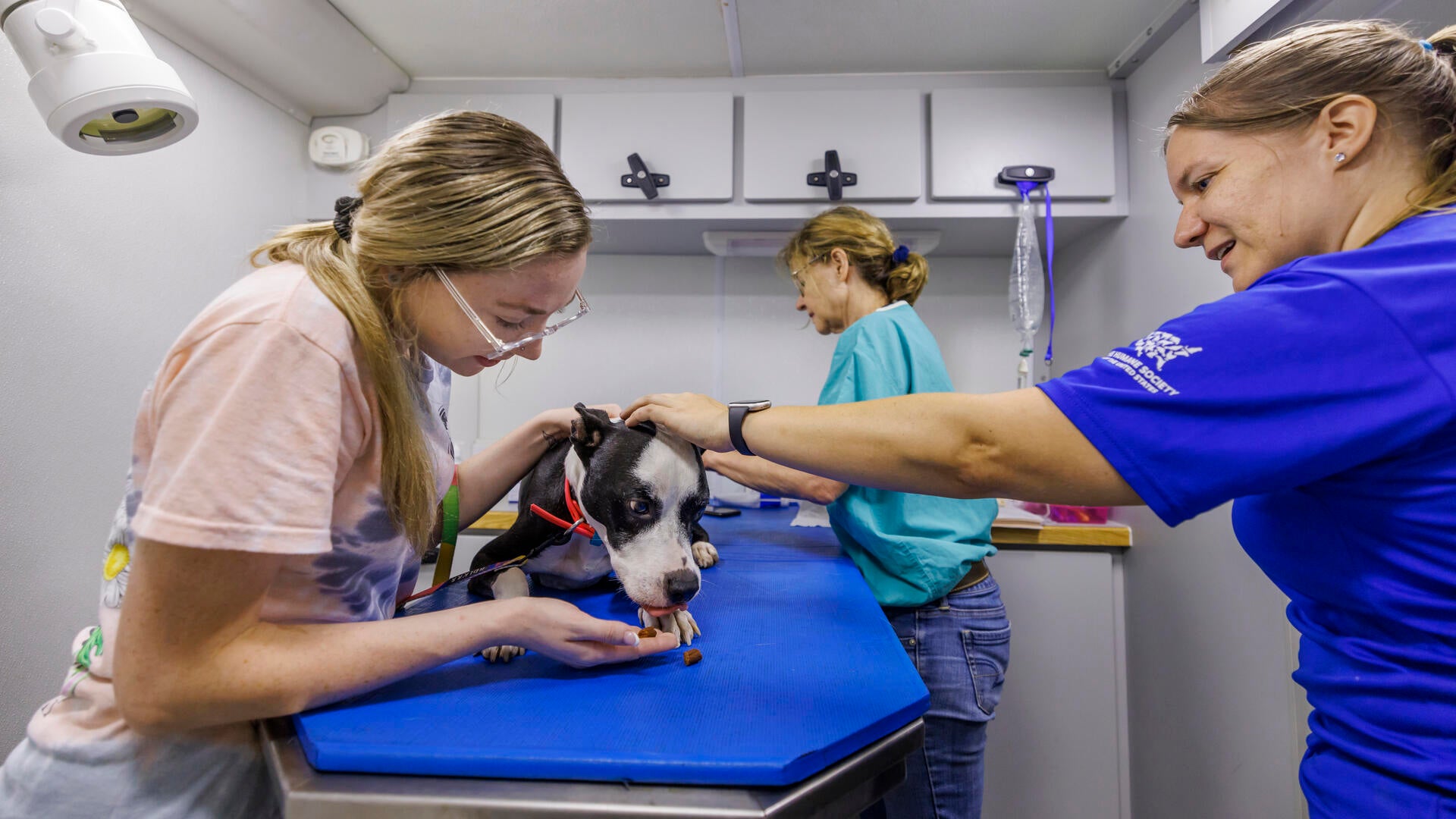
In Florida, after Hurricane Helene, Taylor Groom, left, comforts her dog during a Humane World (formerly called HSUS) disaster relief veterinary services clinic exam with Dr. Tammi Whelan and senior specialist of animal health Allison Bundock. (Photo by Colin Hackley/AP Content Services for Humane World for Animals)
In the U.S., western North Carolina has long been praised as a refuge with mild weather. Some even claimed it was a “climate haven.” Then Hurricane Helene dumped as much as 30 inches of rain in three days, equivalent to 5 months’ worth of rain in the hardest hit areas.
After responding to Hurricane Helene, Humane World is now helping Appalachian communities become more disaster resilient. Over the last few months, we hosted summits in North Carolina and Tennessee with attendees from local shelters and national organizations to debrief on Hurricane Helene recovery efforts and what can be improved in the future.
Looking to the future
Disaster preparedness efforts will only become more crucial as the impacts of climate change continue to accelerate.
In the face of these mounting threats, sweeping budget cuts made by the Trump administration have been weakening disaster response and preparedness efforts. This year the Federal Emergency Management Agency lost 2,000 workers, according to Reuters. A FEMA working group focused on animals in disasters was disbanded. And many disaster experts within the federal government did not attend major hurricane and flood preparedness conferences because of restrictions on employee travel.
Earlier this year, the U.S. National Oceanic and Atmospheric Administration predicted an above-normal Atlantic hurricane season. Parascandola says we’ll likely see the impacts of federal cuts as hurricane season progresses.
Around the world, our disaster responders expect extreme weather to remain a major part of their work. “The [work]load is going to increase, definitely,” Suresh said in July. That same day, some of his colleagues were providing emergency aid to around 12,000 animals impacted by flooding in eastern India.
“We don’t unfortunately expect things to get better from here,” Parascandola says. “We’re preparing that this is going to be our reality.”
Related Stories
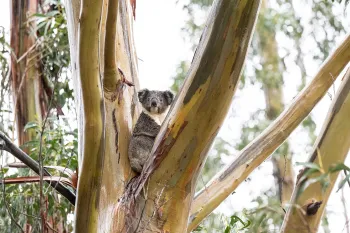
Meredith Lee/Humane World for Animals
Five years ago, Humane World deployed to Kangaroo Island to help animals during the bushfires. Now, our team returns the site of that heartbreaking rescue.
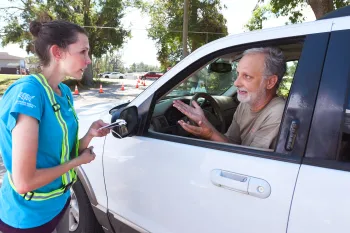
Rick Wilson/AP Images for the HSUS
How Humane World, formerly called the Humane Society of the United States, helped more than 9,000 animals after Hurricane Idalia.

Hemanth Byatroy/HSI
After heavy rains caused a series of landslides in the Wayanad district, rescuers helped stranded animals.
